Soil erosion is a pressing issue in both agricultural and forestry practices, as it can lead to significant loss of topsoil and nutrients. The use of cover cropping has emerged as an effective strategy to combat soil erosion while also promoting sustainable land management. For instance, imagine a hypothetical scenario where a farmer in the Midwest decides to implement cover cropping on their cornfield. By planting a mix of legumes and grasses during the fallow period, the farmer aims to protect the soil from wind and water erosion, improve its structure, and enhance nutrient cycling.
Cover cropping involves growing specific plant species between or alongside main crops with the primary purpose of protecting the soil from erosive forces. This practice offers several benefits that contribute towards mitigating soil erosion. Firstly, vegetation cover provided by cover crops acts as a physical barrier against precipitation impact and wind velocity, reducing surface runoff and preventing the detachment of soil particles. Secondly, these plants have extensive root systems that bind the soil together, increasing its stability and resistance to erosion processes. Additionally, certain cover crop species are known for their ability to enhance organic matter content in the soil through nitrogen fixation and carbon sequestration mechanisms. As a result, this not only improves soil fertility but also promotes overall ecosystem health in agriculture and forestry systems.
The use of legumes in cover cropping can be particularly advantageous due to their ability to fix atmospheric nitrogen into the soil through a symbiotic relationship with nitrogen-fixing bacteria. This process helps to enrich the soil with this essential nutrient, reducing the reliance on synthetic fertilizers and minimizing the risk of nutrient runoff into nearby water bodies.
Grasses, on the other hand, contribute to erosion control by developing an extensive network of fibrous roots that hold soil particles together. Their dense root systems improve soil structure, porosity, and water-holding capacity, making it less prone to erosion during heavy rainfall events.
In addition to erosion control benefits, cover crops also play a crucial role in enhancing nutrient cycling within agroecosystems. As they grow and eventually decompose, cover crop residues release organic matter back into the soil. This organic matter acts as a source of nutrients for subsequent crops and supports beneficial microbial activity that contributes to overall soil health.
Moreover, cover cropping can offer additional advantages such as weed suppression, pest management, and habitat provision for beneficial insects. By diversifying plant species within agricultural fields or forested areas, cover cropping promotes biodiversity and ecological resilience.
To successfully implement cover cropping as an erosion control strategy, farmers need to consider factors such as crop rotation schedules, planting methods, appropriate cover crop species selection based on local conditions and goals, and timing of planting and termination. Monitoring soil parameters such as organic matter content, nutrient levels, compaction status, and erosion rates can help assess the effectiveness of cover cropping practices over time.
Overall, integrating cover cropping into agricultural and forestry systems provides a sustainable approach to mitigate soil erosion while promoting long-term land productivity and environmental conservation.
Benefits of Cover Cropping
One example that showcases the positive impact of cover cropping is a case study conducted on a farm in Iowa. The farmer, facing severe soil erosion issues due to heavy rainfall and wind exposure, decided to implement a cover cropping system. By planting a mixture of legumes and grasses during fallow periods, the farmer aimed to protect the bare soil from erosion and improve overall soil health.
- Enhances Soil Health: Cover crops help retain moisture in the soil, reducing water runoff and increasing groundwater recharge.
- Reduces Soil Erosion: By protecting the soil surface from direct impact by raindrops or strong winds, cover crops prevent valuable topsoil from being washed away or blown off.
- Suppresses Weeds: Dense cover crop canopies shade out weed growth, reducing competition for nutrients and sunlight.
- Increases Nutrient Cycling: Certain cover crops have deep root systems that draw up nutrients from deeper layers of soil, preventing leaching and making them available for subsequent cash crops.
| Benefit | Description |
|---|---|
| Enhanced Water Retention | Cover crops act as sponges, absorbing excess water during rainy seasons and releasing it gradually into the ground. |
| Reduced Sedimentation | By acting as natural barriers against erosion, cover crops minimize sedimentation in streams and rivers. |
| Improved Biodiversity | The diverse plant species used as cover crops attract beneficial insects and promote ecosystem resilience. |
| Increased Carbon Sequestration | Cover crop residues contribute organic matter to the soil, enhancing carbon sequestration capacity. |
The benefits of implementing cover cropping practices are significant in addressing various challenges faced by agriculture and forestry sectors today. From enhancing soil health through improved water retention to suppressing weeds naturally, these advantages make cover cropping an invaluable tool for sustainable land management. In the subsequent section, we will explore different types of cover crops and their specific benefits in further detail.
Types of Cover Crops
Transitioning from the benefits of cover cropping, it is important to understand the various types of cover crops that can be utilized in agriculture and forestry. By selecting appropriate cover crops for specific purposes, farmers and land managers can maximize their effectiveness in combating soil erosion and improving overall soil health.
For instance, let’s consider a hypothetical case study where a farmer in a region prone to heavy rainfall wants to prevent excessive runoff and nutrient leaching from his fields. He decides to plant a mix of legume cover crops such as clover and vetch alongside grasses like ryegrass. This combination not only provides ground cover but also fixes nitrogen into the soil, reducing fertilizer requirements while promoting its fertility.
There are several different types of cover crops available, each with its own unique characteristics and advantages. Here are some common examples:
- Grasses: Species like rye, oats, and barley are quick-growing options that establish dense root systems, preventing soil compaction and erosion.
- Legumes: Plants such as clover, vetch, or peas have the ability to fix nitrogen from the atmosphere into the soil through specialized nodules on their roots. This reduces the need for synthetic fertilizers while enriching the soil.
- Brassicas: Including plants like radish or mustard can help break up compacted soils with their deep taproots. Additionally, they scavenge nutrients from deeper layers of the soil profile.
- Mixtures: Blending multiple species together creates diverse cover crop mixes that offer an array of benefits including increased biodiversity, improved pest management through natural predators attracted by flowering species, enhanced weed suppression due to competition between different plants, and extended periods of ground coverage throughout the year.
| Type | Growth Habit | Benefits |
|---|---|---|
| Grasses | Quick-growing | Prevents soil compaction and erosion |
| Legumes | Fixes nitrogen | Reduces fertilizer requirements |
| Brassicas | Deep taproots | Breaks up compacted soils |
| Mixtures | Diverse blends of types | Increased biodiversity |
By choosing the appropriate cover crop type or a combination that suits their specific needs, farmers and land managers can effectively combat soil erosion while improving overall soil health. The following section will delve into practical steps to implement cover cropping, providing guidance on how to integrate these beneficial practices into agricultural and forestry systems seamlessly.
Transitioning to the subsequent section about “Steps to Implement Cover Cropping,” it is crucial for farmers and land managers to understand the necessary actions required in order to successfully incorporate cover crops into their operations.
Steps to Implement Cover Cropping
Types of Cover Crops:
In the previous section, we explored different types of cover crops that are commonly used in agriculture and forestry. Now, let us delve into the steps involved in implementing cover cropping practices. To illustrate these steps, consider the following hypothetical scenario.
Imagine a farmer who owns a large agricultural field experiencing significant soil erosion due to heavy rainfall during the monsoon season. The topsoil is being washed away, leading to decreased fertility and productivity. In order to combat this issue and promote sustainable farming practices, the farmer decides to incorporate cover cropping into their cultivation methods.
The implementation process involves several key steps:
-
Assessing Soil Conditions: Before selecting specific cover crops, it is crucial for the farmer to assess the current state of their soil. This includes evaluating its structure, nutrient content, moisture levels, compaction issues, and pH balance. By understanding these factors, the farmer can choose appropriate cover crop species that will address these specific soil concerns effectively.
-
Selecting Suitable Cover Crops: Once soil conditions have been assessed, it is time to select suitable cover crops that will fulfill desired objectives. For example, if one goal is reducing erosion and improving water infiltration rates, grasses like ryegrass or oats may be chosen as they provide excellent ground coverage with deep root systems.
-
Planning Crop Rotation: Incorporating cover crops requires careful planning of crop rotation schedules. It is important to strategically integrate cover crops within existing crop rotations to maximize benefits such as nitrogen fixation or weed suppression while minimizing potential negative impacts on subsequent cash crops.
- Reduced soil erosion leading to improved land sustainability
- Increased organic matter resulting in enhanced soil fertility
- Enhanced water infiltration reducing surface runoff
- Improved biodiversity promoting ecological resilience
Additionally, here’s a table showcasing some examples of cover crops and their corresponding benefits:
| Cover Crop | Benefits |
|---|---|
| Winter Rye | Erosion control, weed suppression |
| White Clover | Nitrogen fixation, soil improvement |
| Radishes | Soil compaction alleviation |
| Buckwheat | Pest suppression, pollinator attraction |
In conclusion, implementing cover cropping practices involves assessing soil conditions, selecting suitable cover crops, and planning crop rotations. By following these steps, farmers can combat soil erosion effectively and promote sustainable agricultural practices.
Cover Cropping Techniques
Transitioning from the previous section on implementing cover cropping, let us now explore various techniques that can be employed to effectively incorporate cover crops into agricultural and forestry practices. To illustrate the importance of these techniques, consider a hypothetical scenario where a farmer in an erosion-prone area decides to implement cover cropping as a soil conservation measure. By carefully selecting appropriate techniques, this farmer aims to combat soil erosion and enhance overall land productivity.
There are several key techniques for successful implementation of cover cropping:
-
Selection of Cover Crops: Choosing suitable cover crop species based on regional climate conditions, soil type, and specific objectives is crucial. For example, leguminous cover crops like clover or vetch can fix atmospheric nitrogen and improve soil fertility. Grasses such as ryegrass or barley provide excellent ground coverage and help prevent nutrient leaching.
-
Timing of Planting: The timing of planting cover crops plays a vital role in their establishment and effectiveness. It is important to determine the right window between cash crop harvest and subsequent planting of cover crops. This allows sufficient time for cover crops to grow before winter sets in or summer droughts occur.
-
Crop Rotation: Incorporating cover crops into a well-designed rotation system enhances their benefits by breaking pest cycles, improving soil structure, and reducing weed pressure. Alternating between different types of cash crops with compatible cover crops maximizes resource utilization while minimizing potential negative interactions.
-
Management Practices: Proper management practices ensure optimal growth and development of cover crops throughout their lifecycle. Adequate irrigation, fertilization based on soil nutrient requirements, regular monitoring for pests/diseases, and timely termination methods (e.g., mowing or rolling) contribute significantly to achieving desired outcomes.
To emphasize the significance of implementing these techniques effectively through visual representation, we present a table highlighting the positive impacts associated with each technique:
| Techniques | Positive Impacts |
|---|---|
| Selection of Cover Crops | Improved soil fertility and nitrogen fixation |
| Timing of Planting | Enhanced establishment and growth before adverse conditions |
| Crop Rotation | Pest control, improved soil structure |
| Management Practices | Optimal development, reduced pest/disease incidence |
In summary, by implementing appropriate cover cropping techniques like careful selection of cover crops, timely planting, strategic crop rotation, and effective management practices, farmers can improve land productivity while combatting soil erosion. In the subsequent section about “Effects of Cover Cropping on Soil Health,” we will explore how these techniques positively impact soil health and contribute to sustainable agricultural and forestry systems.
Effects of Cover Cropping on Soil Health
Cover Cropping Techniques have proven to be effective in combating soil erosion and improving overall soil health. In this section, we will explore the various techniques used in cover cropping and their impact on agricultural and forestry practices.
One example of a successful cover cropping technique is the use of leguminous cover crops such as clover or vetch. These plants have nitrogen-fixing properties, which means they can convert atmospheric nitrogen into a form that can be readily utilized by other plants. By incorporating leguminous cover crops into the rotation, farmers can reduce the need for synthetic fertilizers while also improving soil fertility.
To further illustrate the benefits of cover cropping, consider a hypothetical case study conducted on a farm experiencing significant soil erosion issues. The farmer implemented a technique known as strip-tillage, where strips of vegetation were strategically planted between crop rows. This approach helped stabilize the soil, preventing erosion during heavy rainfall events. Additionally, it enhanced water infiltration and reduced surface runoff, resulting in improved moisture retention within the field.
The positive impacts of cover cropping techniques extend beyond erosion control. Here are some additional advantages:
- Enhanced biodiversity: Cover crops provide habitat for beneficial insects and microorganisms, promoting ecological diversity within agricultural systems.
- Weed suppression: Dense cover crop growth competes with weeds for resources like light and nutrients, reducing weed pressure without relying heavily on herbicides.
- Carbon sequestration: Certain cover crops have deep root systems that help capture carbon from the atmosphere and store it in the soil.
- Disease management: Some cover crops possess allelopathic properties that release natural compounds inhibiting pathogens’ growth and spread.
| Cover Crop | Benefits | Growth Period |
|---|---|---|
| Clover | Nitrogen fixation | Spring – Fall |
| Rye | Erosion control, weed suppression | Fall – Spring |
| Buckwheat | Quick establishment, pollinator attractant | Summer |
| Radish | Deep root penetration, soil compaction alleviation | Fall |
Cover cropping techniques have proven to be valuable tools in agriculture and forestry. By implementing these practices, farmers can mitigate soil erosion, enhance soil health, and improve overall sustainability of their land management systems. In the subsequent section, we will delve into the relationship between cover cropping and sustainable land management.
[Transition sentence] Understanding the connection between cover cropping and sustainable land management is crucial for maximizing the benefits of this practice while ensuring long-term environmental stewardship.
Cover Cropping and Sustainable Land Management
In the previous section, we explored the beneficial effects of cover cropping on soil health. Now, let’s delve further into how cover cropping practices can contribute to sustainable land management and combat soil erosion.
Imagine a hypothetical scenario where a farmer in an agricultural region implemented cover cropping techniques to address issues of soil erosion and degradation. By planting legumes, such as clover or alfalfa, alongside cash crops like corn or wheat, the farmer effectively reduced soil erosion by enhancing ground cover throughout the year.
The positive impacts of cover cropping on soil health extend beyond mitigating erosion concerns. Consider the following aspects:
- Improved water retention: Cover crops help improve the ability of soils to retain water, reducing runoff and promoting infiltration.
- Enhanced organic matter: The decomposition of cover crop residues adds valuable organic matter to the soil, contributing to increased nutrient availability and overall fertility.
- Weed suppression: Dense growth provided by certain cover crops helps suppress weed populations naturally, minimizing the need for herbicides.
- Promotion of beneficial organisms: Cover cropping creates favorable habitats for diverse microbial communities and beneficial insects that play crucial roles in maintaining ecosystem balance.
To illustrate these benefits more clearly, let’s take a look at a table comparing key factors influenced by cover cropping before and after implementation:
| Factors | Before Cover Crop Implementation | After Cover Crop Implementation |
|---|---|---|
| Soil Erosion | High | Low |
| Water Retention | Insufficient | Improved |
| Organic Matter Levels | Low | Increased |
| Weed Populations | High | Suppressed |
This comparison highlights how implementing cover cropping practices positively influences various aspects related to sustainable land management. It not only combats soil erosion but also improves water retention capabilities, increases organic matter levels, and reduces weed populations naturally.
By incorporating cover cropping techniques into agricultural and forestry systems, farmers and land managers can effectively enhance soil health, promote sustainable practices, and mitigate the negative impacts of erosion. Such proactive measures contribute to long-term environmental sustainability while ensuring the productivity and resilience of our lands for future generations.


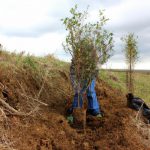
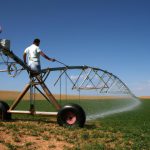
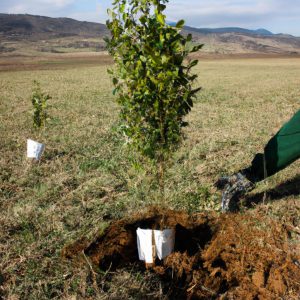
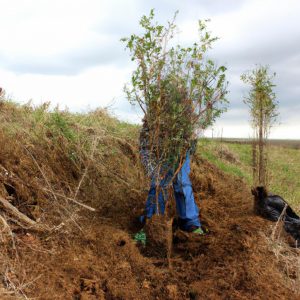
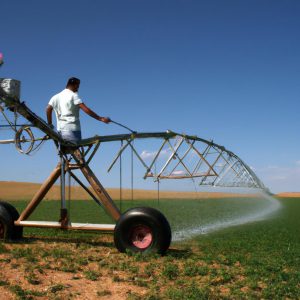
More Stories
Windbreaks in Agriculture and Forestry: Combating Soil Erosion
Conservation Tillage in Agriculture and Forestry: Combating Soil Erosion
Conservation Tillage in Agriculture and Forestry: Combating Soil Erosion